
The FLIR Si124: Keeping the Lights On and Preventing Failures
The FLIR Si124: Keeping the Lights On and Preventing Failures Application Story From FLIR Shop FLIR SPI Inspections relies on their vast field experience and
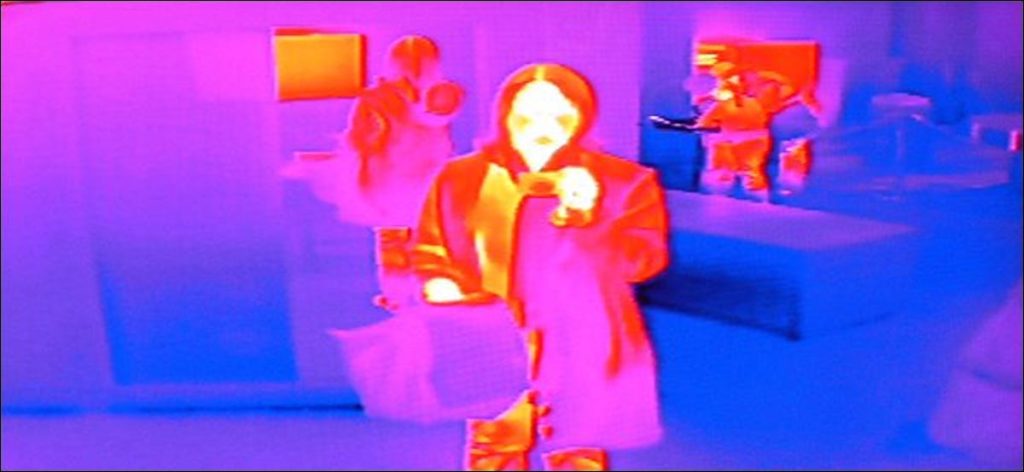
A thermal camera is a non-contact handheld device that detects infrared energy (heat) and converts it into a visual image.
A heat sensor is attached to a special type of lens in a thermal camera, which is then adapted to work alongside standard image-capture technologies. This enables engineers to quickly identify areas of high temperature or sources of wasted heat energy in building inspections, such as overheating components or potential thermal insulation gaps.
Only a small portion of the electromagnetic spectrum is visible light, and it is the only part we can see. The sensor on a thermal detection camera allows the user to view the otherwise invisible infrared spectrum, which exists at wavelengths between visible light and microwaves, when pointed at an object or area.
Modern IR cameras often display this as a color map, though black-and-white displays are still preferred for certain applications due to their reduced visual ‘business’ and better capture of fine detail.
Warmer components or regions will appear as reds, oranges, and yellows on a color thermographic display, while cooler parts will appear as purples and blues (green usually indicates areas that are roughly at room temperature). Thermal cameras are useful for identifying heat sources in very dark or otherwise obscured environments because they measure infrared radiation rather than visible light.
The origins of thermal imaging are unknown. There have been numerous accounts of thermal imaging under various names dating back to the 1800s, but no one has been identified as the inventor. The technology behind today’s thermal imaging cameras was originally developed for the military.
The mass production of thermal imaging technologies has only recently progressed to the point where handheld thermographic cameras (also known as heat cameras, thermal detection cameras, or infrared cameras) are now an affordable option for most civil applications and/or hobbyist use.
However, viewing heat energy as an infrared spectrum display isn’t exactly a new concept; in fact, William Herschel, a German-British astronomer, established the roots of the basic thermography principle more than 200 years ago:
Thermal imaging allows you to see the heat radiating from an object. Thermal cameras record the temperature of various objects in the frame and then assign each temperature a color shade, allowing you to see how much heat it emits in comparison to the objects around it.
By recognizing and capturing different levels of infrared light, thermal cameras can detect temperature. This light is invisible to the naked eye, but if the intensity is high enough, it can be felt as heat. Infrared radiation is emitted by all objects and is one of the ways heat is transferred. The more infrared radiation an object emits, the hotter it is. Thermal cameras can detect this radiation and convert it into an image that our eyes can see.
Microbolometers are internal measuring devices in the thermal camera that capture infrared radiation, and each pixel has one. The microbolometer then records the temperature and assigns each pixel to a specific color, which is then displayed on the camera’s screen.
A lens, a thermal sensor, processing electronics, and a mechanical housing make up a thermal camera. Infrared energy is focused onto the sensor by the lens. The sensor can have pixel configurations ranging from 80 60 to 1280 1024 pixels and beyond. This is the camera’s resolution.
Thermal detectors must sense energy with much longer wavelengths than visible light, requiring each sensor element to be significantly larger. As a result, these resolutions are low when compared to visible light imagers. As a result, thermal cameras typically have lower resolution (fewer pixels) than visible sensors of comparable mechanical size.
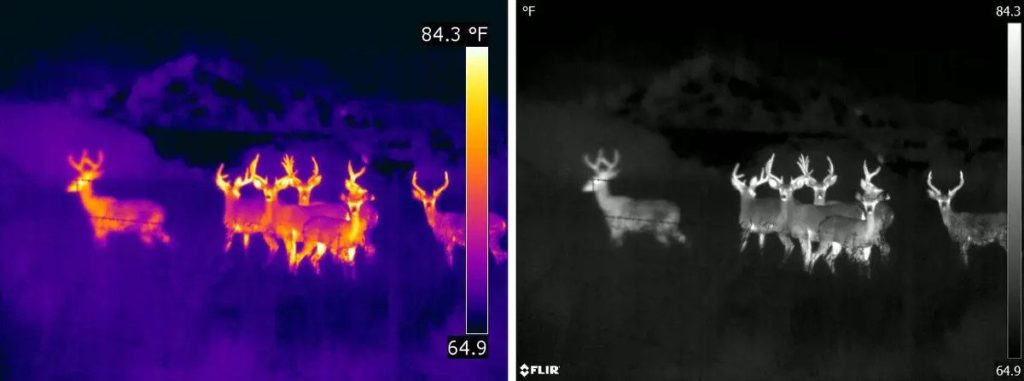
Heat detected by an infrared camera can be measured with extreme precision, allowing for a wide range of applications. A FLIR thermal camera can detect minute differences in heat—as low as 0.01°C—and display them as different shades of grey or color palettes.
Everything we come into contact with in our daily lives emits thermal energy, including ice. The more thermal energy something emits, the hotter it is. A “heat signature” is a term used to describe the emitted thermal energy. Regardless of lighting conditions, when two objects next to each other have even subtly different heat signatures, they show up quite clearly to a thermal sensor. Thermal cameras can see in complete darkness or in smoke-filled environments because of this.
Thermal cameras have a nearly infinite number of applications. Thermal cameras, which were originally developed for surveillance and military operations, are now widely used for building inspections (moisture, insulation, roofing, and so on), firefighting, autonomous vehicles and automatic braking, skin temperature screening, industrial inspections, scientific research, and many other applications.
Thermal imaging is frequently used in remotely piloted drones (UAVs), greatly enhancing general recon capabilities in hazardous or difficult-to-observe environments. Thermal imaging can be a valuable tool for photographers in hobbyist drones for a variety of purposes, while UAV thermal imaging is also useful for emergency response teams, search and rescue teams, and tactical military applications.
Thermal imaging has a wide range of applications in electrical maintenance. Thermal imaging is used by power line technicians to locate and pinpoint joints and parts that are at risk of overheating because they emit more heat than the stronger sections. They can also aid in the detection of faulty connections or devices.
Thermal imaging not only aids firefighters in locating survivors in low-visibility situations where dust, fog, ash, and other contaminants obscure visibility, but it can also be used to detect hotspots, additional potential sources of ignition, or the presence of still-burning fires that may be coming from unexpected places (such as underground or within cavity walls, for example).
Thermal imaging has a number of important marine applications, including providing a significant boost to collision detection systems when sailing at night, in fog, or in bad weather. While underwater thermal imaging is limited in terms of effectiveness (even with the most advanced technologies), it’s not uncommon to find heat detection cameras built to marine grade specifications and mounted in multiple positions aboard seagoing vessels of all sizes today.
Fevers and temperature anomalies can be detected with the help of healthcare and medicine. This is especially important in airports, where thermal imaging cameras can quickly and accurately scan all incoming or outgoing passengers for higher temperatures, which was critical during recent disease outbreaks such as SARS and Ebola. Thermal imagers have also been shown to aid in the diagnosis of a variety of disorders affecting the neck, back, and limbs, as well as circulatory issues.
Thermal imaging uses a sensor to convert the radiation into a visible light picture. Not only does this picture help us identify objects in total darkness, or through dense smoke, but the sensor information can be used to measure temperature differences as well.
Infrared thermography (IRT), thermal video and/or thermal imaging, is a process where a thermal camera captures and creates an image of an object by using infrared radiation emitted from the object in a process, which are examples of infrared imaging science.
All digital cameras come with an infrared thermal imaging device already built in. Most have a filter, which means that the picture won’t appear as a thermal image until you remove the filter.
FLIR One Thermal Imaging Equipment for Android Devices (Black) Now anyone can be a superhero with FLIR One’s Thermal Imaging Device for Android phones and tablets. … Simply attach FLIR One to your smartphone or tablet, and take your sidekick with you wherever you go.
Your zone of privacy may be narrowing in some areas, but the Supreme Court ruled in 2001 that unless they have a warrant, police cannot scan your home with a thermal imaging device to track the heat radiation coming from inside.
No, thermal cameras cannot see through walls, at least not like in the movies. Walls are generally thick enough—and insulated enough—to block any infrared radiation from the other side. If you point a thermal camera at a wall, it will detect heat from the wall , not what’s behind it
The answer is NO. Metal is actually a peculiar material to do thermal imaging. … Thermal cameras can’t see through metal objects but highly conductive metals can reveal hot spots, cold spots, and the level of a substance inside a metal container.
Thermal imaging cameras detect heat, enabling law enforcement professionals to see in complete darkness. Unlike night vision cameras, thermal imaging cameras require no ambient light and retain their clarity in any lighting condition.
When used correctly, thermal imaging systems generally have been shown to accurately measure someone’s surface skin temperature without being physically close to the person being evaluated. … Thermal imaging systems have not been shown to be accurate when used to take the temperature of multiple people at the same time.

The FLIR Si124: Keeping the Lights On and Preventing Failures Application Story From FLIR Shop FLIR SPI Inspections relies on their vast field experience and

Using FLIR Thermal Imaging Cameras, dairy farms can perform an automatic health check Case Study From FLIR Shop FLIR As they become more and more
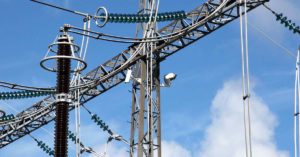
In Stavanger, Norway, Thermal Imaging Cameras Guard an Electrical Substation Case Study From FLIR Shop FLIR It is impossible to imagine modern society existing without
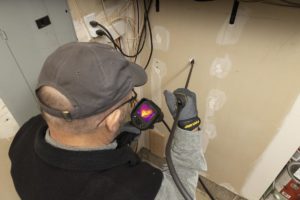
Using Thermal Imaging to Find Hidden Issues During Home Inspections From FLIR Shop FLIR Regular inspections beyond what we can see on the outside are

Large-Format IR Windows Are Used By A Bottled Water Company A Case Study From FLIR One of North America’s leading bottled water companies – dedicated
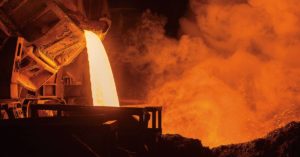
FLIR Thermal Imaging Cameras Reveal What’s Behind The Flames A Case Study From FLIR A wide variety of industries relies on furnaces and boilers for
Copyright © 2024 Butler & Land Technologies, LLC. All Rights Reserved.
Web Design by Red Spot Design. Return & Refund Policy, Terms & Conditions